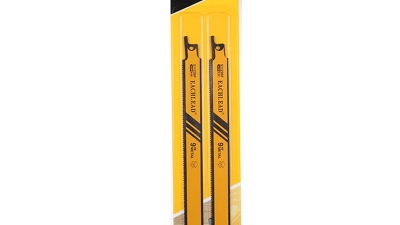Top Strategies for Selecting the Best 300mm Reciprocating Saw Blades
Table of Contents
- Understanding the Basics of 300mm Reciprocating Saw Blades
- Key Features to Consider When Choosing 300mm Saw Blades
- Comparing Different Types of Materials for Blade Construction
- The Importance of Tooth Design and Configuration in Saw Blades
- Top Brands and Their Best 300mm Reciprocating Saw Blade Offerings
- Maintenance Tips to Extend the Life of Your Saw Blades
- Maximize Your Projects with S1122BF 9 Inch Reciprocating Saw Blades: A Comprehensive Guide to Efficiency and Versatility
- FAQS
- Conclusion
- Related Posts
When you're trying to pick the best 300mm reciprocating saw blades, whether you're a pro or just doing some DIY, it can really feel overwhelming with so many options out there. At Wenzhou Yichuan Tools Co., Ltd., we’ve been around since 2003, and we totally get how important it is to use high-quality tools—not just for getting the job done right, but also for safety. As a top manufacturer of electric tool accessories, we specialize in making top-notch jigsaw blades, reciprocating saw blades, and planers that suit a wide range of needs. In this guide, I’ll share some key tips and things to keep in mind when choosing the right 300mm reciprocating saw blade. Whether you're working on a big renovation or just some detailed work, picking the right blade can really make a difference in how the job turns out—more efficient, durable, and precise. So, let’s dive in and help you find the perfect match for your cutting projects!
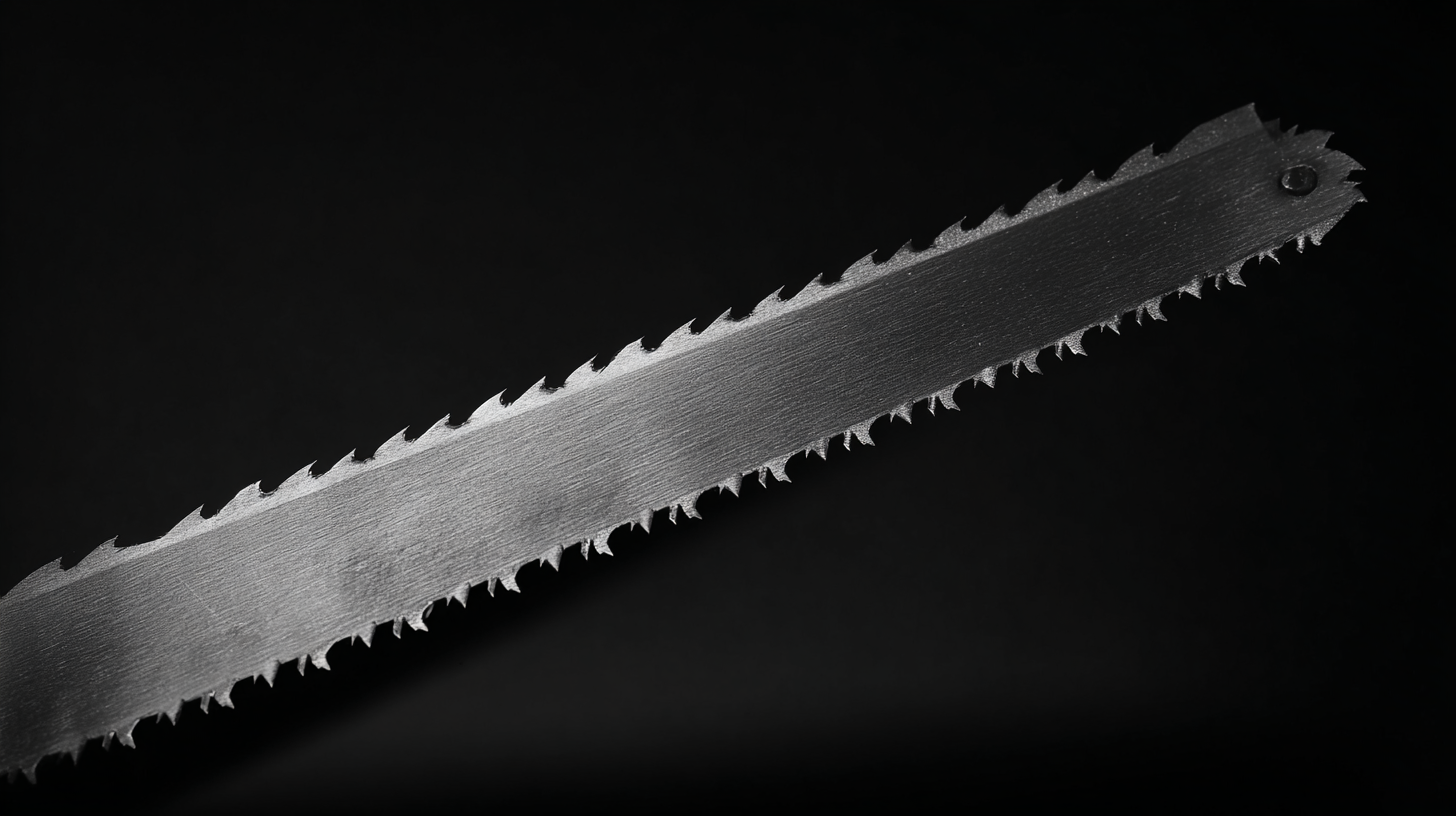
Understanding the Basics of 300mm Reciprocating Saw Blades
When you're out shopping for a 300mm reciprocating saw blade, it's really important to get a handle on the basics. Knowing what sets these blades apart—like their tooth design, what they're made of, and what you'll be using them for—can make all the difference. For example, blades made from high-speed steel (HSS) are great for softer stuff like wood, but if you're tackling tougher materials like metal or plastic, bi-metal blades are definitely the way to go. These combine HSS with a softer steel backing, making them way more durable and flexible.
Funny enough, industry reports from Freedonia Group show that the market for power tool accessories, including these blades, is expected to grow about 4.5% each year—reaching over $13 billion by 2025. That’s pretty crazy when you think about it! It just goes to show that whether you're a pro or just a DIY hobbyist, picking the right blade isn’t just about getting the job done; it’s about making sure it lasts and stays safe. When it comes to 300mm blades, the number of teeth and how far apart they are really matter for how well you cut. Usually, blades with around 10-14 teeth per inch (TPI) are the sweet spot for general-purpose cutting—letting you work quickly without sacrificing smoothness. Once you get these basics down, it’s easier to pick the right blade for the job and make your projects smoother, safer, and more efficient.
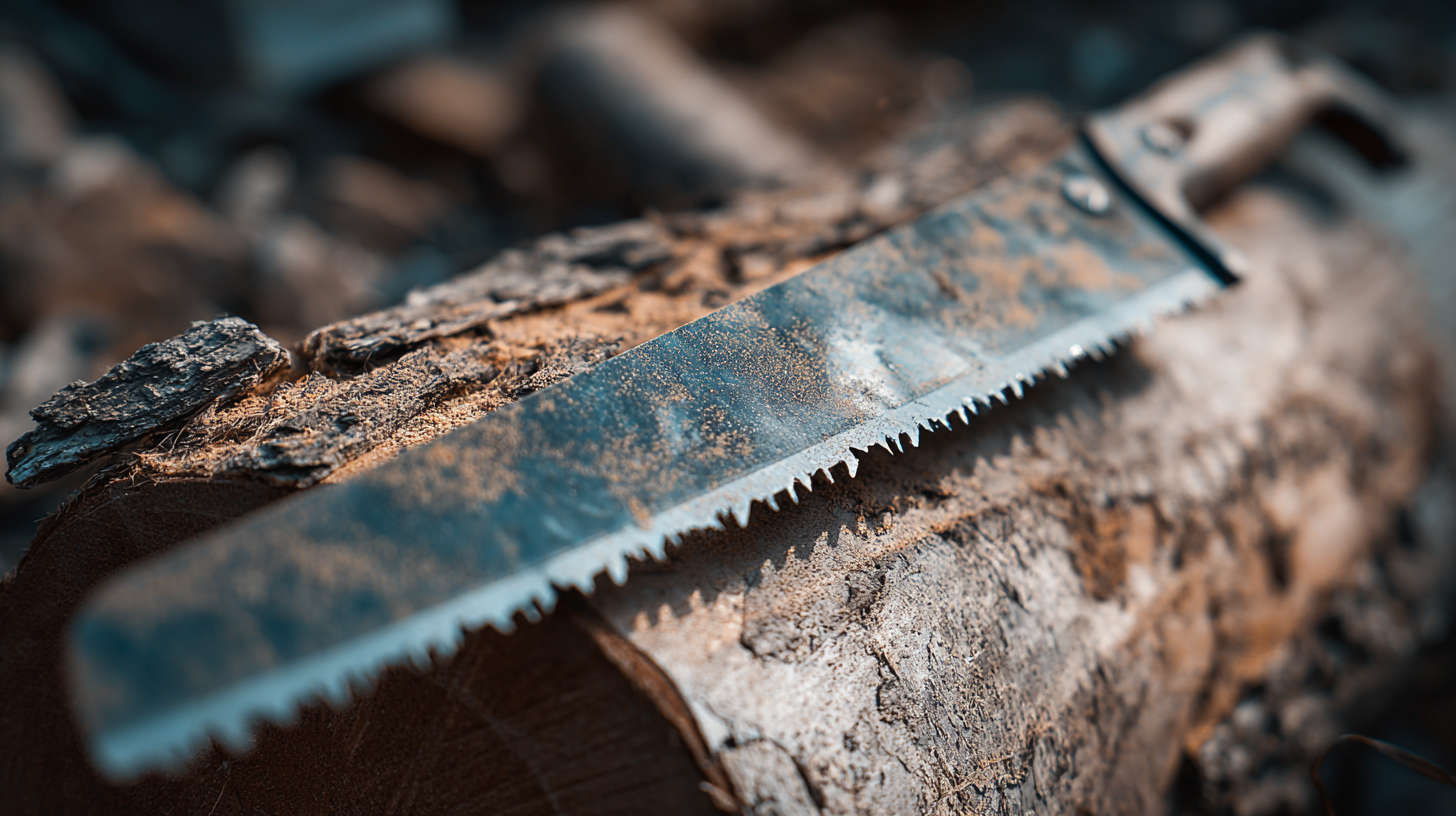
Key Features to Consider When Choosing 300mm Saw Blades
When you're out shopping for 300mm reciprocating saw blades, there are a few key features you really want to pay attention to—these can make a big difference in how well they work and how easy they are to use. For starters, take a look at the tooth design. Blades that have variable tooth spacing tend to give you smoother cuts and vibrate less, which is pretty handy whether you're doing demolitions or more precise work. Oh, and the material of the teeth matters too! High-speed steel, or HSS, is pretty solid for general cuts, but if you're cutting through tougher materials, carbide-tipped blades are the way to go—they stay sharp longer and handle harder stuff without dulling fast.
Another thing to think about is how thick and wide the blade is. Thicker blades tend to be more stable—less likely to bend or break when you're pushing through tough cuts. On the flip side, wider blades can cut faster because they remove more material with each stroke, making your job a lot quicker. And of course, don’t forget to double-check that the blade is compatible with your saw. You wanna make sure it fits snugly so everything runs smoothly and safely during use. Basically, choosing the right blade is all about matching these features to what you need the tool to do—done right, it'll make your life way easier.
Comparing Different Types of Materials for Blade Construction
When you're picking out the best 300mm reciprocating saw blades, the material you choose really matters if you want them to perform well and last. I've found that common options include high-carbon steel, bi-metal, and carbide-tipped blades. For example, high-carbon steel blades are pretty budget-friendly and work great on softer materials, but they tend to wear out faster if you're tackling tougher stuff. On the flip side, bi-metal blades strike a nice balance—they're flexible yet tough, so they can handle a range of materials without snapping easily.
Then there are carbide-tipped blades. Those are built for heavy-duty jobs—they last longer and pack a punch when cutting through hard or abrasive materials. They stay sharp much longer than other types, making them perfect for tougher projects. Basically, each material serves a different purpose, so it's really worth understanding what kind of cutting you'll be doing before you pick one. Here at Wenzhou Yichuan Tools Co., Ltd., we take pride in making high-quality reciprocating saw blades designed for both pros and DIY folks. Whatever your project, we've got a blade that fits your needs.
The Importance of Tooth Design and Configuration in Saw Blades
When you're on the hunt for the best 300mm reciprocating saw blades, it’s super important to get a good grip on how the tooth design and setup work. Honestly, the shape and arrangement of those teeth really make a big difference in how well the blade cuts and how efficient it is. For example, having more teeth might sound like a good idea, but it can actually slow down your cut and produce more heat or friction. On the flip side, too few teeth might give you rougher edges and make things less smooth. So, picking the right tooth setup really depends on what material you're working with.
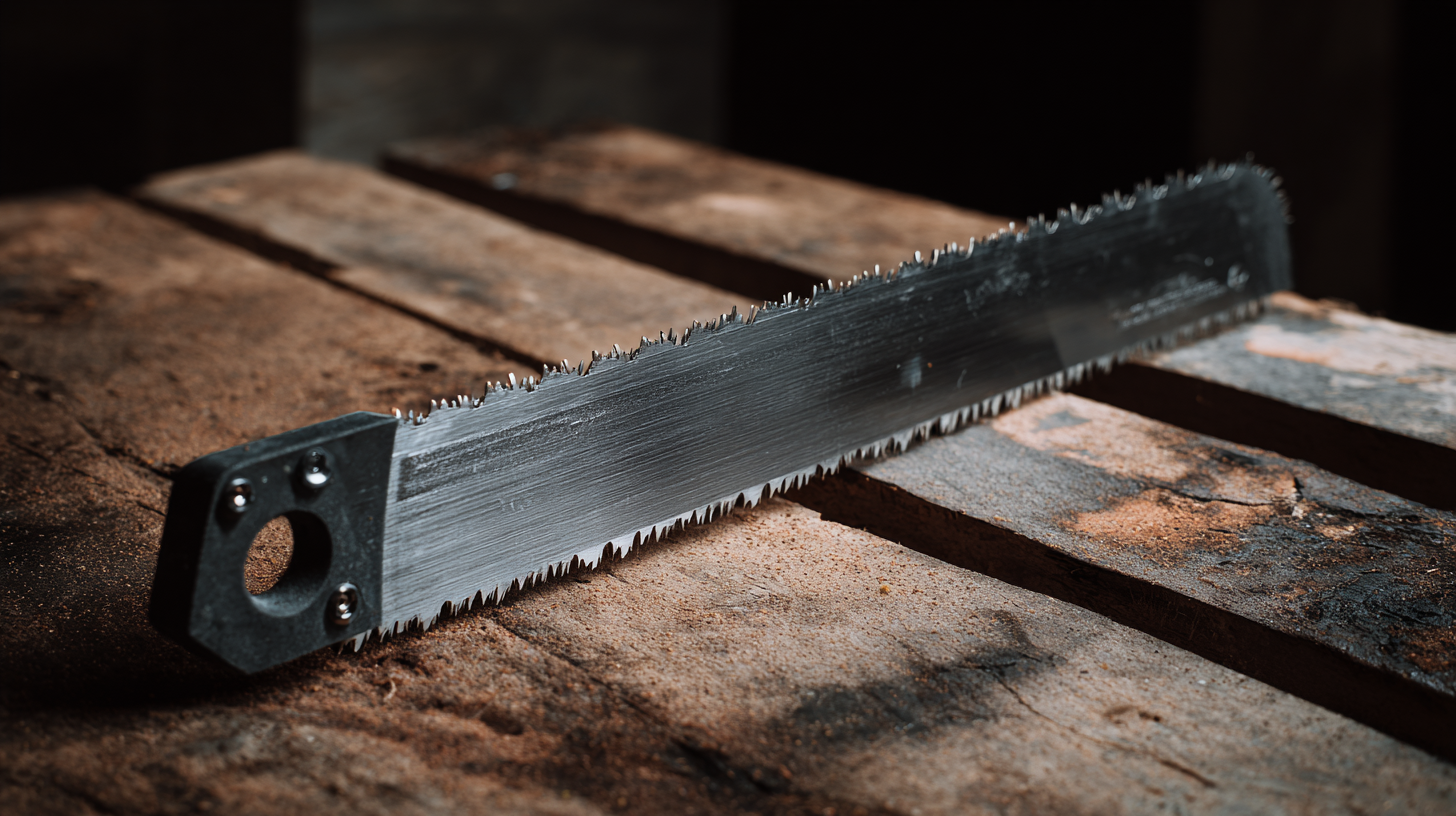
Here are some quick tips to help you pick the right blade:
- 1. Think about the material: If you’re cutting softer stuff, a blade with fewer teeth usually makes things go faster. But for tougher, denser materials, a blade with more teeth can give you a cleaner, more precise cut.
- 2. Look at the tooth design: Special features like serrated edges can really make a difference — they help the blade cut more efficiently, and they often cut down on vibrations and noise while you're at it.
Getting these details right can seriously level up how well you perform with your reciprocating saw blades. Just keep in mind the specifics of your project and match them up with the blade's features for the best outcome. Happy cutting!
Top Brands and Their Best 300mm Reciprocating Saw Blade Offerings
Picking out the best 300mm reciprocating saw blades isn’t exactly something you do on a whim. It’s really worth paying attention to the big-name brands that have built a solid rep for quality and performance. Companies like Bosch, DeWalt, and Milwaukee—they’re kind of the heavy hitters right now, you know? They’re always coming out with innovative blade designs and materials crafted for all kinds of jobs, whether you’re cutting wood, metal, or doing demolition work. Oh, and I read recently from IBISWorld that the market for power tool accessories—including saw blades—is expected to grow by about 4.5% each year. That just shows there’s definitely a rising demand for good, reliable tools out there.
When you’re trying to pick the right blade, here are some tips that might help. First off, think about what material you’re cutting; different teeth configurations work better for wood than they do for metal. For example, Bosch’s Precision Next Generation blades are pretty popular among pros because they cut through wood quickly and vibrate less—that’s always a plus. Also, pay attention to things like blade thickness and teeth per inch (TPI)—those little details can really make a difference in how smoothly your cut goes.
Another thing to keep in mind: brand versatility. Milwaukee’s line of bi-metal blades, for instance, are known for being super tough and resistant to wear, especially if you’re tackling heavy-duty projects. And don’t forget, checking out user reviews and going for blades that come with a good warranty can save you some headaches later. At the end of the day, sticking to trusted brands is a smart move if you want blades that work well and last long—that’s really the bottom line when it comes to picking a reciprocating saw blade.
Top Strategies for Selecting the Best 300mm Reciprocating Saw Blades
This chart displays the cutting performance and durability ratings of various 300mm reciprocating saw blades based on different attributes. It aims to guide users in selecting the best options available in the market.
Maintenance Tips to Extend the Life of Your Saw Blades
Taking good care of your 300mm reciprocating saw blades is a pretty big deal if you wanna get the most out of them and save some bucks in the long run. According to the folks over at the International Tool Manufacturers Association (ITMA), doing regular maintenance can actually boost how long your blades last—sometimes by up to half again as long! After each use, a quick clean-up with a soft brush or cloth really helps clear out resin and debris that could dull the blades over time. Plus, it’s a smart move to prevent rust, which can seriously mess with their performance. Trust me, a little TLC goes a long way in keeping them in top shape.
Another thing to keep in mind is to check the tension of your blades regularly. If the tension isn’t even, it can cause them to wear out faster and mess up your cuts. The American Machinery Institute suggests giving your blades a quick tension check before every use—just to make sure they’re tight and secure. And don't forget about lubrication! Using the right products to oil the blades can cut down on friction and help them work better for longer. Keep up with these simple tips, and you’ll be surprised how much longer your blades last, how well they perform, and how much easier your work gets—saving you time, effort, and some dough too.
Maximize Your Projects with S1122BF 9 Inch Reciprocating Saw Blades: A Comprehensive Guide to Efficiency and Versatility
When it comes to maximizing your projects, the S1122BF 9 Inch Reciprocating Saw Blades stand out as a top choice for professionals seeking both efficiency and versatility. With an overall length of 9 inches (225x19x0.9mm) and a tooth count of 14 teeth per inch, these blades are engineered for outstanding performance on a variety of materials. Specifically designed for heavy-duty applications, they excel in cutting through thick sheet metal ranging from 3 to 8mm, as well as solid pipes and profiles ranging from Φ10 to 175mm.
The bi-metal construction of the S1122BF blades ensures durability and longevity, making them a reliable addition to any toolset. The reinforced pair-setting teeth provide a professional-grade cutting experience, enabling users to execute straight cuts in metal with precision and speed. Whether you're tackling industrial projects or home improvements, these saw blades can significantly enhance your cutting capabilities, allowing you to get the job done quickly and effectively. Embrace the versatility of the S1122BF blades and witness a marked improvement in your project's outcomes.
FAQS
: Key features to consider include tooth design, tooth material, blade thickness, and width. Variable tooth spacing can provide smoother cuts, while high-speed steel (HSS) is durable for general cutting, and carbide-tipped blades excel at cutting harder materials. Blade thickness and width influence stability and cutting efficiency.
Blades with variable tooth spacing can produce smoother cuts and reduce vibration, making them suitable for both demolition and precision work.
Common materials include high-carbon steel, bi-metal, and carbide-tipped options. Each material serves different cutting needs based on durability and application.
High-carbon steel blades are cost-effective and great for cutting softer materials, but they may wear out more quickly on tougher materials.
Bi-metal blades combine flexibility and toughness, making them ideal for cutting a wide range of materials without breaking.
Carbide-tipped blades offer longevity and exceptional cutting power, particularly suitable for heavy-duty applications and hard or abrasive materials.
Thicker blades provide more stability and are less likely to bend or break during tough cuts, while wider blades enhance cutting efficiency by removing more material per stroke.
Yes, ensuring that the blade fits securely with your saw model is crucial for maximizing safety and performance during operation.
For heavy-duty applications, look for carbide-tipped blades as they maintain sharpness better and provide exceptional cutting power on hard materials.
Wenzhou Yichuan Tools Co., Ltd. focuses on producing high-quality reciprocating saw blades tailored for both professionals and DIY enthusiasts, ensuring you find the right blade for your tasks.
Conclusion
Picking the right 300mm reciprocating saw blades is pretty important, whether you're a pro or just into DIY projects. To really make a smart choice, it helps to get a handle on the basics—like how these blades are built and what features matter most. When you're checking out different materials, keep in mind things like durability and how well they cut. Also, the tooth design and configuration can make a big difference in how smoothly or quickly the blade does its job, especially when you're working with different materials.
There are plenty of top brands out there offering 300mm reciprocating saw blades, each suited to different needs. It’s worth spending some time on maintenance tips too—taking good care of your blades can seriously add to their lifespan and save you money in the long run. Here at Wenzhou Yichuan Tools Co., Ltd., we started back in 2003, and our goal has always been to craft high-quality saw blades that suit all kinds of users, making your cutting tasks easier and more efficient.
Related Posts
-

Navigating Import Export Certifications for Best Sabre Saw Blades in Global Markets
-

Discover Quality and Innovation with Reciprocating Saw Blade Set at the 137th Canton Fair 2025
-

Unveiling the Future of Carbide Reciprocating Saw Blades at the 137th Canton Fair
-

Navigating Tariff Challenges How Chinese Manufacturers of Best Reciprocating Saw Blades for Tree Stumps Thrive
-

What is the Best Reciprocating Saw Pruning Blade for Efficient Tree Maintenance
-
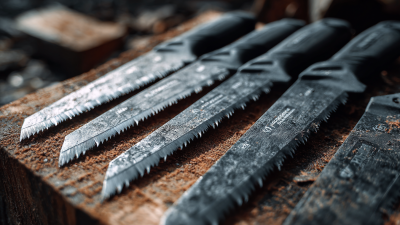
Unlocking the Future of Best Reciprocating Saw Blade Set Market Insights and Usage Guide to 2025
Blog Tags:






